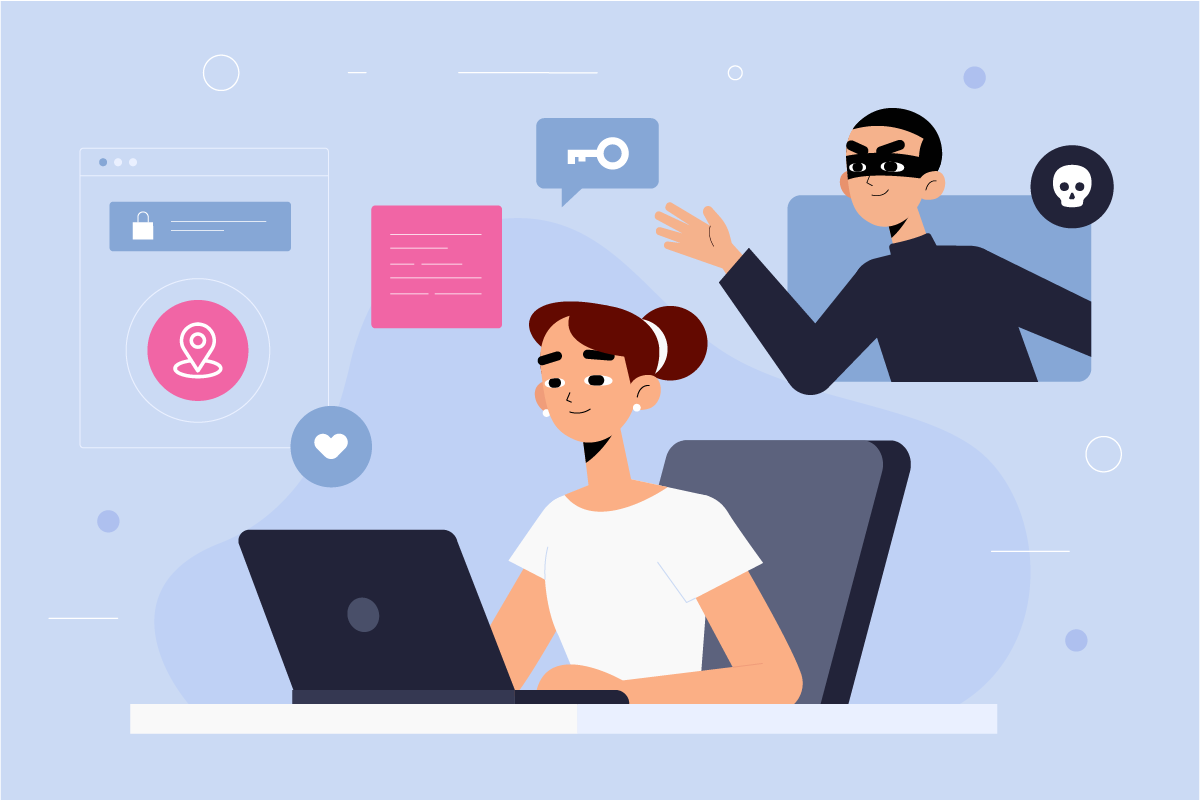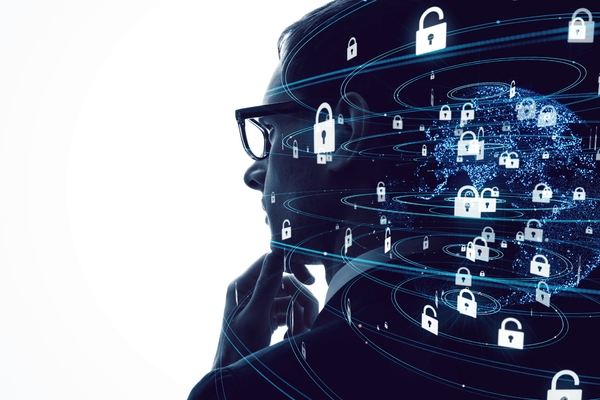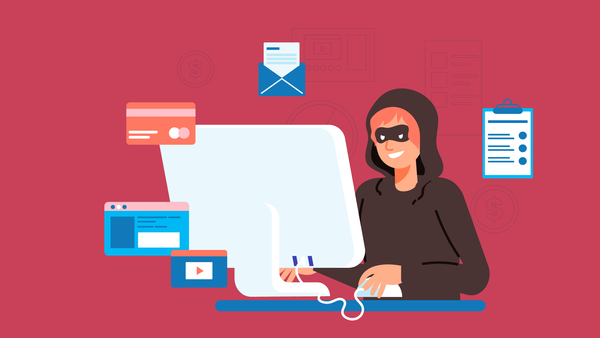Cyberstalking: Meaning, Impact, and Prevention
Cyberstalking uses online channels to harass or intimidate, causing victims severe emotional and physical distress. Learn preventive tips and report threats immediately.

Cyberstalking is an unaltered facilitation that comes with the anonymity privilege in the online world. It is becoming a serious issue daily with more advanced AI tools being launched and used. In this generation, the Internet has become an integral part of our lives. We depend on it for personal and professional usage, often spending a lot of hours in the online realm interacting closely on different social media platforms, forums, and surfing websites. Cyberstalking, a form of cybercrime, uses technology or telecommunications to stalk an individual to the point of harassment. Cyberstalking is most commonly seen in intimate partners, relationships of long-distance/online relationships, and extremist groups. The victims often complain about constant surveillance and threats of social degradation.
What Is Meant by Cyberstalking?
Cyberstalking is similar to the traditional stalking that happens in real life. The main distinction is that the perpetrator uses technology to facilitate their threatening activities instead of physically being present near the victim. This is conducted to threaten, humiliate, stalk, harass, and intimidate their victim to manipulate their decisions regarding daily life and online behavior. All of this can cause significant physical and emotional distress for the victim, who might feel that they are being watched every minute of the day and nothing is safe.
Cyberstalking is not a straightforward crime; it requires different tactics and sophisticated planning that cannot be tracked easily. The growth of cybercrimes in recent years has been consistent in comparison to cases being solved.
The disturbing continuation of threats leaves the individual in fear for their safety and well-being. It often starts with a simple text message or email that later escalates to deliberately intimidating social media posts, information leaks, fake accusations/rumors, etc.
Examples of Cyberstalking
In many cases, the victim might not even be aware that they are being cyberstalked. The stalker can go as far as contacting the victim’s friends and family to cultivate a sense of fear and obligation. The immediate requirement of the perpetrator is to control the victim and their thoughts to invoke fear and anxiety. Some common patterns that were noticed in recent cyberstalking cases were location tracking, private data being hacked/breached, monitoring the victim’s online and real-life whereabouts, sending threats, and fake media to terrorize their lives.
- Online comments that are suggestive, explicit, rude, and offensive to an individual.
- Targeting the victim in the cyber world by stalking which forums and groups they are active on for any possible communication.
- Emails with threatening and lewd images or messages.
- Using fake profiles to connect with the victim and stalk their online accounts. It can also be done by hacking their social media and using it against their will.
- Publicly posting private photos and videos or creating fake versions, or explicit media content of the victim.
- Obtaining or sending illicit/explicit media either publicly or privately to the victim.
Stalking in the online realm can go deeper than it looks, it can lead to daily distress which causes emotional damage and disrupts personal lives.
Cyberstalking Consequences
Just as typical stalking leaves the victim in anxiety and fear, cyberstalking also leads to distress and emotional imbalances which can lead to physical issues. The victim can go through
- Fear
- Confusion
- Anxiety
- Sleep disturbances
- Stomach and digestion issues
- Mental drainage
- Irritation
- Frustration and depression
These few examples are just a few among the many consequences that are the result of cyberstalking. The most common ideation among all the cyberstalking victims was that of suicidal thoughts. Through a survey, it was claimed that they faced PTSD too along with other emotional drawbacks. This is why it is crucial to seek professional mental health help and notify your friends and family if you are going through cyberstalking or similar crimes.
It should not be handled solely as the threats can escalate anytime and become something more dreadful and graver.
Ways to Prevent Cyberstalking
It is only practical that we cannot completely stop cybercrimes and control our online interactions. However, it is necessary to take precautions and understand all the security policies before entering the digital realm. We can only take action to keep ourselves safer online and decrease the chances of its occurrence.
Security Is The Priority.
When entering the digital landscape, make sure to protect all your online accounts, logins, or even downloads.
- Ensure to use strong different passwords for each social media account. The same passwords can give easy access to stalkers to take control of your online involvement.
- Keep changing your passwords regularly to avoid being hacked.
- Try and make a habit of logging out of your accounts even on your personal computers. It might sound hassle but will reduce the chances of someone gaining access to your accounts even if they have your device.
- Carry your gadgets with yourself when outside the home. The recent advancements have made it easy to install a tracking or recording app in an instant without being noticed. Keep yourself safe by knowing who is around you and your devices at all times.
- Use multistep verifications to lock your phone and computer. It is a secure action to keep your devices safer than leaving them unprotected.
- Don’t use public Wi-Fi until and unless it is urgent, even if it becomes important, try to use a good VPN for such cases.
Stay Cautious of Your Digital Footprint.
Never ignore privacy policies and security settings when using social media accounts or websites It gives off crucial information regarding your usage control. Safeguard your identity by keeping your digital footprint clean and practicing VPN usage in public places.
- Browse through the security settings of your social media and choose what can be used to protect your personal information.
- Enable settings where people cannot find you without a strong recommendation, email, or phone number. Random requests and messages should not be entertained.
- Use a pseudonym or generic name to log in to different accounts. Using your full name everywhere can get your private info leaked to hackers who are targeting you.
- Do not upload all the personal information and private data as this can make it easier for perpetrators to find your online presence.
- Stay cautious when making new friends or online dating websites. It can lead to serious issues later on if the perpetrator gains access to intimate media content.
Conclusion
In each scenario, it is very important to notify your local police or cybercrime division to help you with cyberstalking issues. Ignoring it or letting the perpetrator control you could lead to serious and irreversible damage. Understanding the signs, and red flags and recognizing the threat is imperative when dealing with anything online. It only takes a few minutes to educate ourselves about security & safety online. We can also take professional guidance to learn more about digital footprint and how to keep it minimum by avoiding malicious links or websites.





